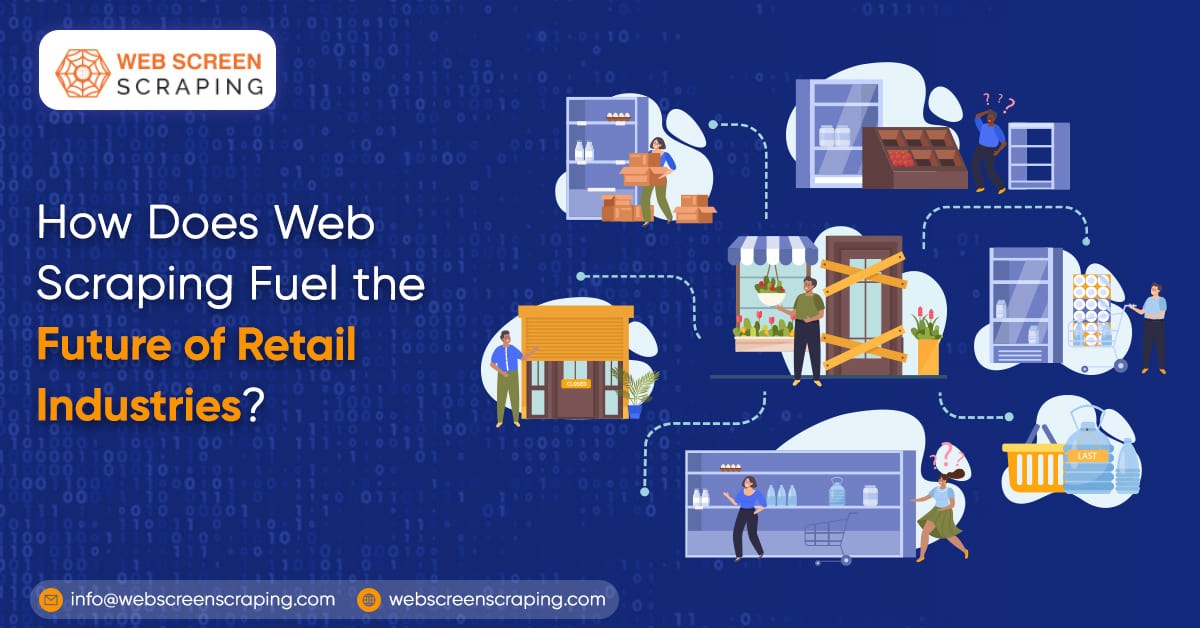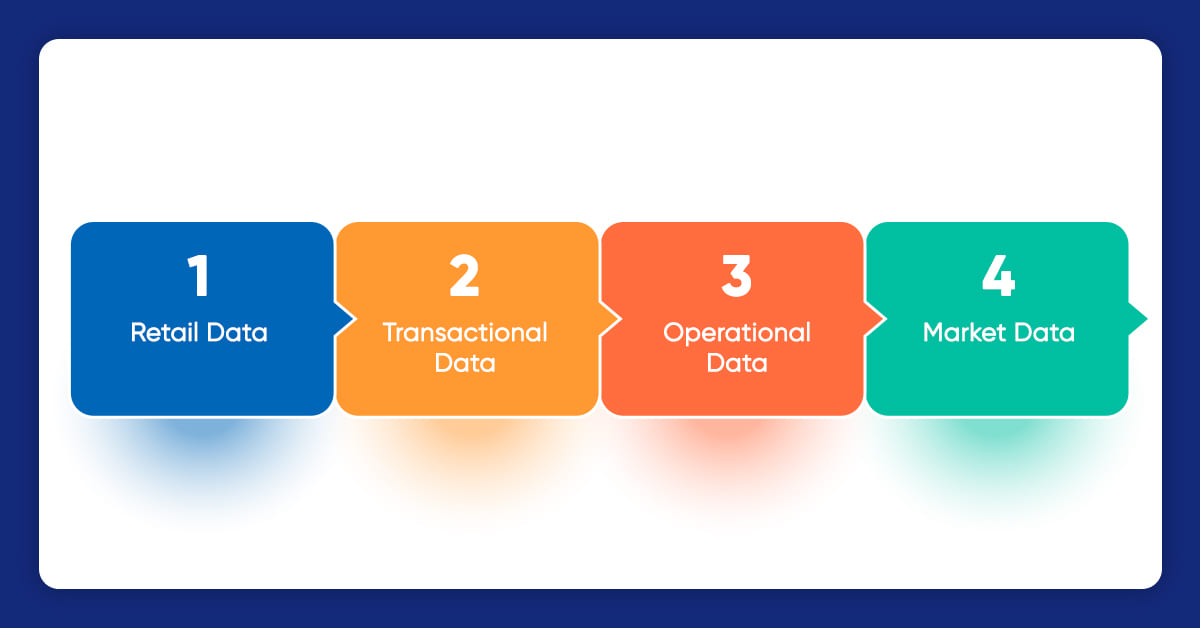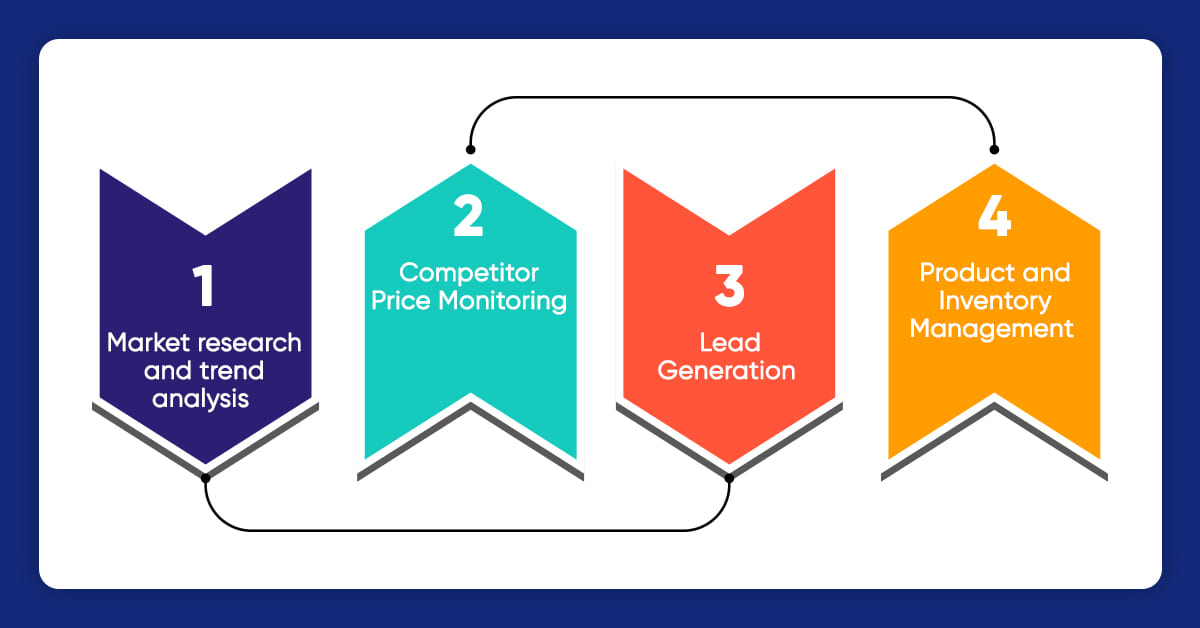
Have you ever wondered how your online store knows when you're nearly out of your favorite tea? Or how do those surprise price drops suddenly appear in your cart? It's not magic; it is called web scraping! Prices, new products, what other stores are up to - all this info can be found and used better. This valuable data helps improve your shopping experience, keeps an eye on other stores, and helps set the best prices. Be prepared as we dive into the world of web scraping, where data is like a treasure map, and shops turn into powerful data-driven superstores!
What is Retail Web Scraping?

Retail Web Scraping is the automatic process of extracting data from e-commerce platforms and other relevant websites. The data can be anything from product information, prices, images or customer feedback. This process can either be performed manually or using software platforms.
1. Identifying the website: Choose a website, which might be online clothing store, supermarket website or any retail website.
2. Crawling: It is crucial to understand the website's structure before scraping. Crawler is an tool that automatically navigates through the websites and identifying page URLs containing relevant product pages.
3. Extraction: Extract data like product descriptions, reviews or prices using tools or languages that support web scraping. This involves reaching to the website’s server, downloading the HTML of the page and parsing for relevant data.
4. Storing: Save the data in usable format, it could be in CSV file, a database or any structured format for further analysis.
1. Retail Data
Retail data encompasses a vast range of information that provides crucial information to power the business. Here are the major categories of retail data that can be scraped.
2. Transactional Data
Transactional data contains details of every purchase made in the store. It includes:
Product Information: Item name, product code, category, brand name etc., which reveals top-selling product details, consumer buying patterns and trends.
Customer Information: Customer name, address, email addresses and purchase history, helps personalise marketing, build loyalty programs and understand customers.
Inventory Data: Product levels, stock movement and reorder information are vital to optimatise inventory, prevent stock outs while reducing unnecessary storage costs.
3. Operational Data
Operational data captures internal operations of the business like sales information, customer service metrics, conversion rates, marketing campaign performance etc.
Point-of-Sale (POS) Data: This data captured at the checkout, includes details like transaction time, cashier ID and payment method, it helps identify peak hours and optimise store performance.
Logistics Data: This data provides information about movement of products from supplier to stores to customers. It helps monitor delivery times and improve supply chain efficiency.
4. Market Data
Market data provides information about market, competitors and economic data of your store.
Competitor Data: This data includes information about competitor prices and marketing strategies to help identify market trends and stay ahead of the competition.
Consumer Data: This data includes consumer trends, preferences and demographics. This helps analyse target audience and new product opportunities.
Economic Data: The data about inflation, financial trends and consumer confidence helps businesses make informed decision about pricing, investments and expansion plans.
Use of Web Scraping in Modern Retail

Web scraping has revolutionized retail businesses in today's data-driven world. It provides deep insights that can help companies to thrive. Here are some benefits of how retail businesses leverage web scraping.
Market Research & Trend Analysis
Businesses can use web scraping to collect product reviews and what customers say on social media. This info can help understand what customers like and don't like, find problems, and make better product decisions. Monitoring recent news, forums, and blogs to catch new styles or tech and adjust your business plan when needed. They can also look at data about holidays, significant events, or sports happenings to guess changes in needs and manage their inventory best.
Competitor Price Monitoring
Keep track of what your competition is doing by using web scraping to see their websites for price changes, new items, deals, and stock amounts. This helps you change your prices and products to stay ahead. Spot when they have special sales or quick deals so you can update your offers and stay relevant to your customers. Learn what your competitors are selling and find possible differences in your products so you can bridge the gaps in the market.
Lead Generation
Extract contact details from important websites or online lists to make email lists for your marketing strategies. Scraping data from business directories, social media, and industry events to find possible customers or partners to work with. Look at numbers on how many people visit your site, interact on social media, and buy things online to determine how well your marketing efforts work. Use this info to make those efforts even better.
Product & Inventory Management
Analyze historical sales data from your website and market data scraped from third-party sources to forecast future demand and optimize inventory levels. Monitor your website product pages and track customer interaction to identify products with low sales velocity and adjust your pricing or promotional strategies accordingly. Scrape real-time price data from competitors and online marketplaces to dynamically adjust your pricing based on current market conditions.
How to Choose the Right Web Scraping Tool?
When picking the right web scraping tool for your retail business, consider your goals first. Ensure the tool can scrape this data. Choose a tool that is easy to use, with a simple interface or good customer support. Think about the volume of data you need. Can the tool handle the volume without crashing?
Check if it can bypass anti-scraping measures so you won't be blocked. It's also essential the tool respects privacy and follows web scraping laws, such as not collecting personal data without consent. Finally, consider your budget. Affordable options exist with essential features. However, consider investing in a more advanced tool if your needs are complex.
Third-Party Scraping Service Providers
Third-party scraping service providers offer a hassle-free approach to data gathering. They have expert teams to manage web scraping tasks, and they handle all the complex processes like code development, overcoming anti-scraping measures, and data cleaning. They provide ready-to-use data as per your needs and format preferences. They save time and resources, enabling you to focus on core business activities.
Conclusion
The role of web scraping in the modern retail businesses cannot be overstated. From understanding customer behaviour to competitor analysis, managing inventory, and optimizing marketing efforts, web scraping applications are wide and varied. As the retail business becomes more data-driven, integrating web scraping into your strategy becomes not just an option but a necessity. Web Screen Scraping is an enterprise that best harnesses the data to forge ahead in this competitive environment. We offer custom data analysis solutions and web scraping services to our customers of all sizes.

